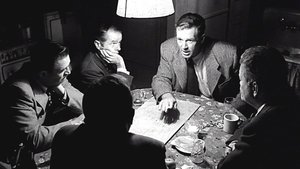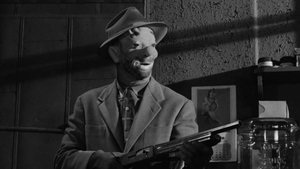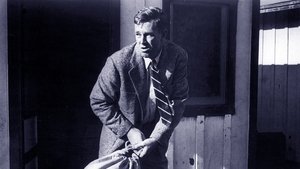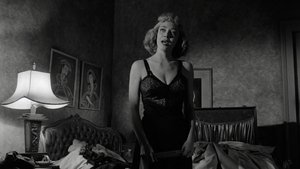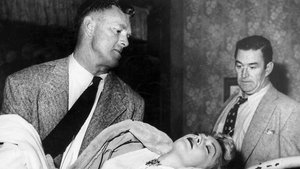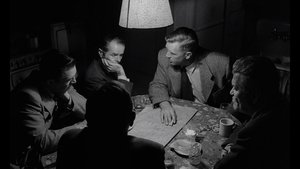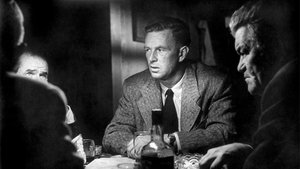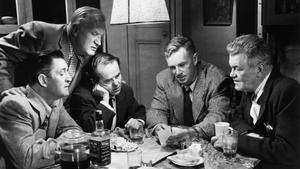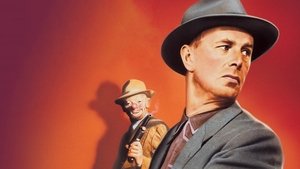Video Sources 0 Views
- Watch trailer
- The Killing 1956 Colorized

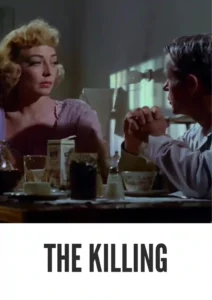
Synopsis
Table of Contents
Toggle
Enter the meticulously planned, yet ultimately doomed, world of Stanley Kubrick’s The Killing, a tense crime drama from 1956, now spectacularly colorized to amplify its gripping narrative. This film, featuring Sterling Hayden, delivers a suspenseful story of ambition, betrayal, and unforeseen circumstances within a high-stakes heist. Ideal for fans of intricate crime stories and Kubrick’s early mastery, this HD download brings a revitalized classic to your screen.
The Killing revolves around Johnny Clay (Sterling Hayden), a seasoned criminal who assembles a team to execute a meticulously planned heist at a racetrack. His crew includes a corrupt cop, a sharpshooter, a bartender, and a few other unsavory characters, each with their own motivations and vulnerabilities.
The plan is intricate: each member has a specific role to play, timed to perfection to ensure the heist’s success. However, as the robbery unfolds, unforeseen circumstances and human weaknesses begin to surface. A neglected wife, a greedy boyfriend, and a series of unfortunate events conspire to derail Johnny’s carefully laid plans. The film masterfully portrays the unraveling of the heist, leading to a suspenseful and tragic climax. The nonlinear narrative keeps viewers on edge, piecing together the events as the tension mounts. Ultimately, The Killing is a powerful exploration of fate, greed, and the fallibility of even the most meticulous plans, showcasing Kubrick’s genius for storytelling and visual composition.
The film boasts a stellar cast that brings this suspenseful crime story to life:
-
Sterling Hayden as Johnny Clay
-
Coleen Gray as Fay
-
Vince Edwards as Val Cannon
-
Jay C. Flippen as Marvin Unger
-
Marie Windsor as Sherry Peatty
-
Elisha Cook Jr. as George Peatty
The Killing firmly sits in the crime drama genre, infused with elements of suspense and tension characteristic of Stanley Kubrick’s directorial style. Its intricate plot, morally ambiguous characters, and focus on the mechanics of a heist make it a standout entry in the crime film canon. It’s a complex, character-driven story with a strong sense of fatalism.
Released in 1956, The Killing is an early example of Stanley Kubrick’s innovative filmmaking. It showcases his developing skills in non-linear storytelling, visual composition, and creating tension. Produced during a time when crime films were evolving beyond simple good-versus-evil narratives, The Killing offered a more nuanced and morally complex portrayal of crime and its consequences. Though made early in his career, the film contains many of the hallmarks that would come to define Kubrick’s later masterpieces, marking it as a critical step in his artistic evolution.
This colorized version of The Killing has been painstakingly restored using contemporary digital techniques. This process enhances the visual experience while respecting the film’s original tone. The colorization process involved careful analysis of the original black and white footage, and colorists worked to add hues that align with the film’s mood and setting. State-of-the-art software was employed to ensure a seamless and visually appealing result. While opinions on colorizing classic films may vary, this version aims to introduce The Killing to new audiences, ensuring its enduring appeal for years to come. The added color enriches the viewing experience, bringing new details to life and making the film more accessible to modern viewers.
-
: Stanley Kubrick
-
: Stanley Kubrick
-
: Clean Break by Lionel White
-
: Lucien Ballard
-
: Betty Steinberg
-
: Harris-Kubrick Productions
-
: United Artists
-
: 85 minutes
-
: MP4
-
: HD (1080p)
-
: Compatible with most devices, including smartphones, tablets, computers, and smart TVs.
The Killing (1956) is widely regarded as a pivotal work in Stanley Kubrick’s filmography, showcasing his early mastery of suspense, innovative storytelling, and visual style. Often praised for its taut direction and complex characters, it remains a significant film in the crime genre. Its influence can be seen in numerous subsequent heist films, solidifying its status as a classic.
-
: What is The Killing about?
-
A: The Killing is a crime drama about a meticulously planned heist at a racetrack that goes wrong.
-
-
: Is The Killing (1956) a well-known Kubrick film?
-
A: While not as widely recognized as some of his later works, The Killing is a highly regarded early film by Stanley Kubrick, showcasing his emerging talent.
-
-
: Is this version of The Killing colorized?
-
A: Yes, this version has been professionally colorized to offer a fresh viewing experience.
-
-
: What makes The Killing interesting for Kubrick fans?
-
A: The Killing offers valuable insights into Stanley Kubrick’s early career, revealing his developing skills in suspense and innovative storytelling.
-
-
: What is the download format?
-
A: The download format is MP4, compatible with most devices.
-
-
: What resolution is the download?
-
A: The resolution is HD (1080p), providing a high-quality viewing experience.
-
Watch The Killing Today!
